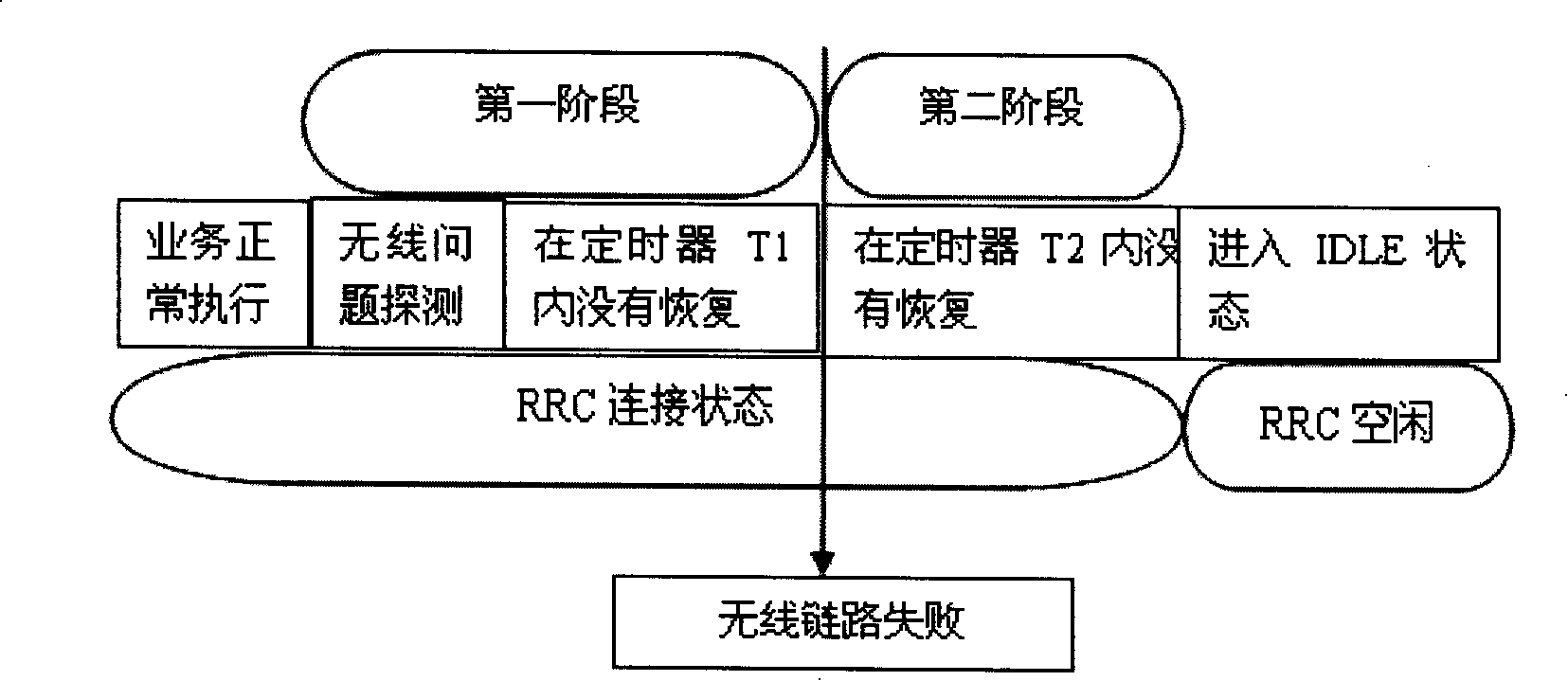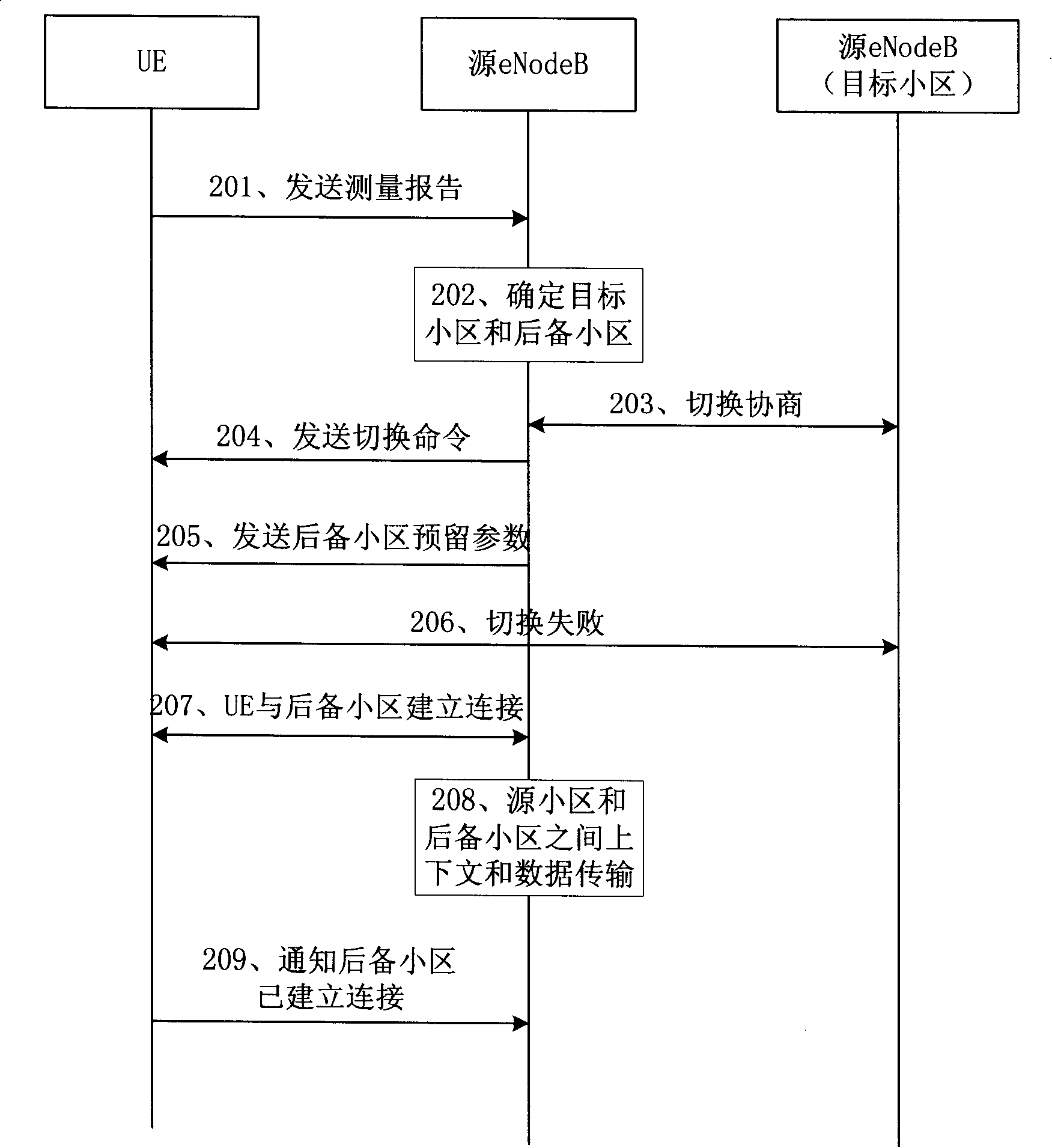Method and device for handling wireless link failures during switching process
A technology of wireless link failure and processing method, which is applied in the field of wireless communication, can solve problems such as delay, and achieve the effect of reducing processing time and saving time spent
- Summary
- Abstract
- Description
- Claims
- Application Information
AI Technical Summary
Problems solved by technology
Method used
Image
Examples
Embodiment Construction
[0033] The embodiment of the present invention describes the processing procedure of the handover failure in the LTE system. For the convenience of expression, the eNodeB used in the LTE system is still called the base station. Handover to a cell under the target base station. The embodiment of the present invention can be understood as: before the user equipment performs handover, the source base station first determines a cell as a backup cell, and includes the backup cell C-RNTI (Cell Radio Network Temporary Identity, Cell Radio Network Temporary Identifier) wireless network The reservation parameters including the temporary identifier are sent to the user equipment, and the user equipment connects with the backup cell according to the reservation parameters of the backup cell after the cell handover fails.
[0034] The specific implementation process of the embodiments of the present invention will be further introduced below with reference to the accompanying drawings. ...
PUM
 Login to View More
Login to View More Abstract
Description
Claims
Application Information
 Login to View More
Login to View More - R&D
- Intellectual Property
- Life Sciences
- Materials
- Tech Scout
- Unparalleled Data Quality
- Higher Quality Content
- 60% Fewer Hallucinations
Browse by: Latest US Patents, China's latest patents, Technical Efficacy Thesaurus, Application Domain, Technology Topic, Popular Technical Reports.
© 2025 PatSnap. All rights reserved.Legal|Privacy policy|Modern Slavery Act Transparency Statement|Sitemap|About US| Contact US: help@patsnap.com



